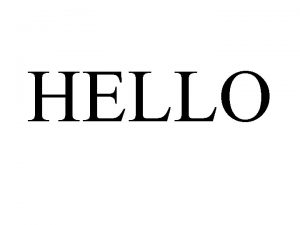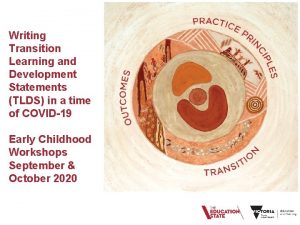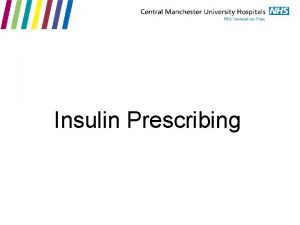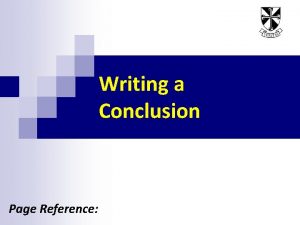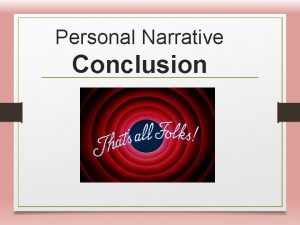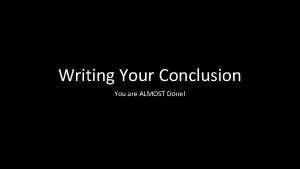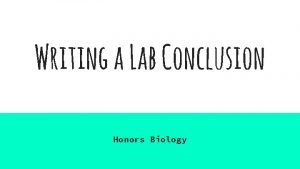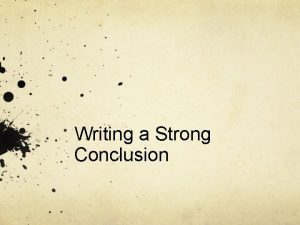Writing a GOOD Conclusion Learning Outcome I can








- Slides: 8

Writing a GOOD Conclusion Learning Outcome: I can identify the 4 parts of a conclusion and critique it

The 4 questions • What were you trying to do? (Question) • What did you think would happen? (Hypothesis) • What did you find out? (Results) • What does it mean? (Interpretation) • Answer in paragraph form!!! • 4 -8 sentences

What were you trying to do? • Rewrite the question as a statement…. • Example: – What are the similarities and differences between animal and plant cells? – In this lab we were trying to determine the similarities and differences between animal and plant cells.

What did you think would happen? • Rewrite the hypothesis as a “I” or “we” statement…. • Example: – If there is carbon dioxide present in an ecosystem, then the indicator will turn yellow. – I thought that if carbon dioxide was present the indicator in the ecosystem would turn yellow.

What did you find out? • Use your actual data and observations to state what occurred during the lab. • Only state what actually occurred, not what you think about it. • Example: • After observing and collecting data on the duckweed plants we found out that the population grew from 8 to 24 leaves during the first 16 days. After day 16 the population stayed at approximately 24 leaves. Day # of duckweed plants 1 8 13 19 2 8 14 20 3 7 15 22 4 8 16 24 5 9 17 23 6 9 18 24 7 10 19 25 8 12 20 25 9 13 21 25 10 15 22 26 11 16 23 24 12 17 24 25 Day # of duckweed plants

What does it mean? • After looking at your data and observations tell me what it means in terms of the unit we are studying. • Also report whether or not your hypothesis was supported. • Example: • Our data shows that populations will grow at a constant rate until they reach a carrying capacity. In our lab the limiting factor that cause carrying capacity might have been light because there isn’t as much light in the fall. Therefore, my hypothesis that there would be continual growth in the population is not supported.

Conclusion Tips • What were you trying to do? (Question) Turn Lab Question into a statement: In this lab, we were… • What did you think would happen? (Hypothesis) Turn hypothesis into a statement: We thought that if … then … • What did you find out? (Results) Use your data and observations to state what occurred. Include averages for high, medium, and low impact areas • What does it mean? (Interpretation) What does your data mean with respect to the unit? Use terms like: ecosystem, biodiversity, human impact, limiting factors, density dependent or independent Was your hypothesis supported? or not supported?

• https: //vimeo. com/38247060
 Zoroastrianism good thoughts good deeds
Zoroastrianism good thoughts good deeds Hi good morning how are you
Hi good morning how are you Good afternoon teacher
Good afternoon teacher You are good when theres nothing good in me
You are good when theres nothing good in me Hello good afternoon teacher
Hello good afternoon teacher A machine that converts mechanical energy into electricity
A machine that converts mechanical energy into electricity Learning objectives of a poem
Learning objectives of a poem Veyldf learning and development outcome descriptors
Veyldf learning and development outcome descriptors Learning outcome prescribe
Learning outcome prescribe






